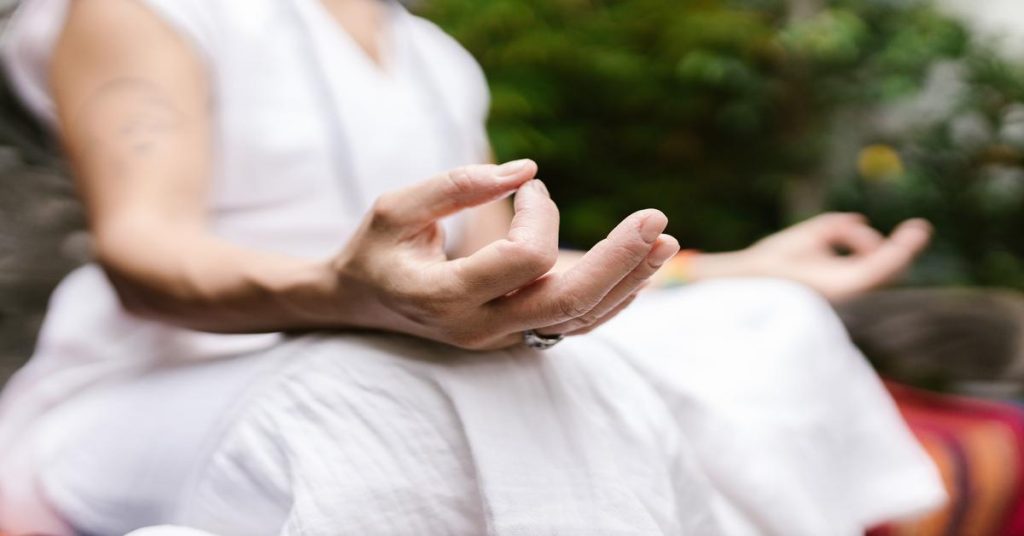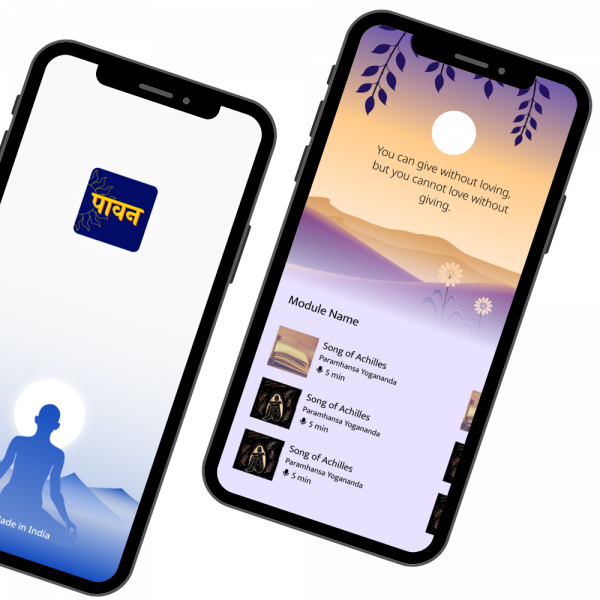Mudras are hand gestures that are used in yoga. They provide your body with ease, balance, and strength. Mudras can be used not only for pranayama but also in other aspects of life. The 11 types of mudras in yoga explained here will help you with your practice or even daily activities. You’ll be able to master the art of mudra yoga to get the most out of this ancient practice today. Before we talk about the types of mudras in yoga, it is imperative to know what yoga mudras are.
What Are Yoga Mudras?
Yoga mudras are hand gestures used with yoga poses to help you achieve the pose, stretch a muscle, or perform other exercises. The best part? They’re also great for meditation.
Yoga mudras are not as specific as kriyas, which are more intense and require much more focus and breathing. You can use them during any yoga session, but they’re instrumental when doing poses requiring an extra push from your muscles.
These simple hand gestures can help you stay in your posture longer and make it easier to focus on your breathing while doing the pose. You’ll want to focus on one gesture at a time during each pose stage, then practice it again before moving on to the next stage.
In the next segment, we put forth the types of mudras in yoga and highlight the benefits of yoga mudra:
You will also ❤️ these:
Introduction To Yoga And 8 Benefits For Overall Wellbeing
A Complete Guide to the 8 Elements of Yoga
Types Of Mudras In Yoga And Their Benefits
There are many types of mudras in yoga. These include hand mudras, eye mudras, and breathing mudras. The benefits of these various mudras are different from each other. We will discuss each type of mudra in this article.
1. Chin Mudra – Gesture of Conscience
In the list of the types of mudras in yoga, we have the Chin Mudra. It is a gesture of conscience, a sign of self-awareness, and an acknowledgment that you are responsible for your actions. When you perform Chin Mudra, you acknowledge that there is no escape from the consequences of your actions.
Chin Mudra is performed by placing the tip of your thumb between the index and middle fingers and closing the other fingers into fists. The gesture invokes humility, emphasizes responsibility, and calls attention to the fact that we are all connected in this life.
2. Abhaya Mudra – Gesture of Fearlessness
The Abhaya mudra is a gesture of protection that signifies the power of the mind. The hand with the index finger pointing upwards is used in this hand gesture to keep the mind focused and alert, thereby protecting it from any negative thoughts or emotions that could lead to fear.
The Abhaya Mudra is one of the most important mudras in yoga. It is believed that this mudra has been used by many great yogis throughout history, including Buddha. The Abhaya Mudra helps keep your mind focused on positive things so that you can remain calm even when facing challenges.
3. Adi Mudra – Gesture of the First or the First Gesture
One of the prevalent types of mudras in yoga is Adi Mudra. It is the first gesture of the yoga mudra. It is also known as Adi Kumbhaka and is a gesture in which you hold your hands together in the shape of an ‘O’. This gesture helps to keep your hands warm and moist during meditation, as well as helps to increase the circulation of blood to the brain.
This yoga mudra also helps to calm down any nervousness or anxiety that may be present and increase your concentration levels.
The benefits of this mudra for yoga include:
- It helps to improve concentration and focus.
- It helps to improve your memory.
- It improves your ability to concentrate.
4. Dhyana Mudra – Gesture of Meditation
This mudra is symbolic of the posture that a person should assume while meditating. It is also known as ‘the gesture of meditation’ or the ‘gesture of concentration’.
When you are in this position, your hands form a circle with palms facing outwards and fingers pointing upwards. The thumb and middle finger are touching each other, forming a circle.
You can also use your index finger to touch your thumb and middle finger. This mudra is called ‘Dhyana Mudra’ because it represents meditation or concentration on one thing.
5. Apana Mudra – Gesture of Vital air Apana
The Apana Mudra is a gesture that is performed by placing your hands on your abdomen. This mudra can be done in both standing and seated postures. The main purpose of this mudra is to enhance the flow of vital air (Apana) to all body parts. It also helps to calm the mind, body and soul.
The technique for performing this mudra is as follows:
- Stand or sit straight with feet together and hands folded in front of the chest.
- Bend down slowly without bending at the waist, keeping your back straight and head upright.
- Breathe in through your nose and close your mouth tightly. Keep your lips sealed and eyes closed while exhaling out through your mouth slowly and deeply.
- Wait for a few seconds when you feel that you have achieved a good rhythm before slowly raising back to a normal standing position, holding yourself firm against gravity.
6. Agni Mudra – Gesture of Fire
Agni Mudra is a gesture of fire, which is said to stimulate the digestive system. It is one of the five mudras in Hatha Yoga.
The posture for Agni Mudra can be performed lying or sitting on the floor. It uses the index finger and middle finger to press on the solar plexus, while two middle fingers are pressed together. The thumbs are placed on the navel and pressed downwards towards it.
Agni mudra and its benefits:
- It helps purify blocked energy channels, which can lead to various health issues, including high blood pressure, heart disease, and even cancer.
- It reduces stress by strengthening the body’s natural defenses against life-threatening bacteria.
7. Vayu Mudra – Gesture of the Air
This mudra is symbolic of the air element, which is said to be the most dynamic and volatile of all the elements. It is also associated with speech, thought and sound. Vayu Mudra helps regulate the flow of prana in the body, which improves the functioning of the mind and nervous system.
The practitioner holds his hands in front of his chest with his palms facing down. He closes his eyes and inhales through his nose while pressing his thumbs on each side of his index fingers. The practitioner then exhales and presses his thumbs on each side of his index fingers while closing them into fists. This gesture is repeated several times, keeping one hand at a time open throughout.
8. Akash Mudra – Gesture of the space
The Akash Mudra is a gesture of the space. It is done by placing your hands and palms in front of you and then spreading them apart to create a tent or space between them. You can also do this with your elbows out to the sides.
This gesture helps you feel God’s presence in your life and also helps you to know that you are not alone. It also helps you connect with other people who may need your help or healing at the time.
Akash Mudra can be done while sitting down or standing up, but it is more effective when standing up as it allows more movement than seated.
It has many benefits for your body and mind:
- Helps to improve your concentration.
- Stimulates the sympathetic nervous system, which improves your immune system and helps you to fight off illness.
- Increases the oxygen flow in your blood, making you feel more energized and alert.
- Decreases blood pressure making it easier to manage stress and anxiety.
9. Prithvi Mudra – Gesture of the Earth
Prithvi Mudra is the most common mudra in yoga. It is a gesture in which three fingers are stretched out, and the thumb is folded upward, forming an “earth” shape. The Prithvi Mudra has been attributed to many different deities and mythological figures, including Lord Brahma, Lord Shiva and Goddess Parvati.
The Prithvi Mudra is said to bring the practitioner peace, stability and security by invoking the power of the earth. It also helps one to feel grounded in their life and helps them to stay calm during difficult times. This mudra can be a meditation tool to help one connect with their inner self and gain clarity regarding their thoughts and feelings.
Ways to Practise Prithvi Mudra:
- Sit comfortably on the floor with your back straight and your hands on your knees. Close your eyes and focus on your breath for a few minutes.
- Now, place one hand on the ground in front of you, palm facing down. Place the other hand on top of that, fingers pointing up and spread wide apart (as if you were holding an egg). Now, move both hands up to form an “O” shape over the head with all fingers pointed straight into the sky. You should feel lightheaded and completely relaxed at this point. Hold this position for 5-10 minutes (or longer) until you experience complete relaxation in every part of your body.
10. Jal Mudra – Gesture of the Water
Jal Mudra is a gesture of the water. It is a mudra that helps in purifying the body and mind. Jal means water, and mudra means gesture. The jal mudra helps in cooling down the body and mind. It also helps in calming down the mind and soul.
It can be done by placing one thumb on the tip of the other index finger, then folding both index fingers together while holding them with your other hand.
Benefits of Jal Mudra:
- Helps in cooling down the body and mind.
- Helps in calming down one’s mind and soul.
- Performs as a meditation tool for those who are tense or anxious.
11. Apana Vayu Mudra – Gesture of the Heart
Last but not least, we have the Apana Vayu Mudra in the list of the types of mudras in yoga. This mudra is one of the most powerful of all yogic gestures. It helps to balance the nervous system, relieve anxiety, and calm down an overactive mind.
This mudra is performed by placing your hands on your heart and gently pressing inwards. This mudra stimulates the apana vayu or “wind” energy, which flows from above to below. The apana energy cleanses the sexual organs and helps to eliminate toxins from the body.
It also helps to clear blockages in the gallbladder, liver and pancreas, which is why this gesture can be helpful for those who suffer from digestive issues like indigestion, bloating or constipation.
In conclusion, These 11 types of mudras in yoga exist within the practice of yoga, and there are many more to learn. By incorporating these mudras into your practice, you can explore the physical and spiritual benefits they offer. You don’t even have to be a yogi; anyone can practice yoga and learn how to do a mudra. After all, they were created to bring the body and mind closer together. So, feel free to experiment with them yourself to see what works best for you. Do you wish to add to our list of types of mudras in yoga, share the comment section below.






